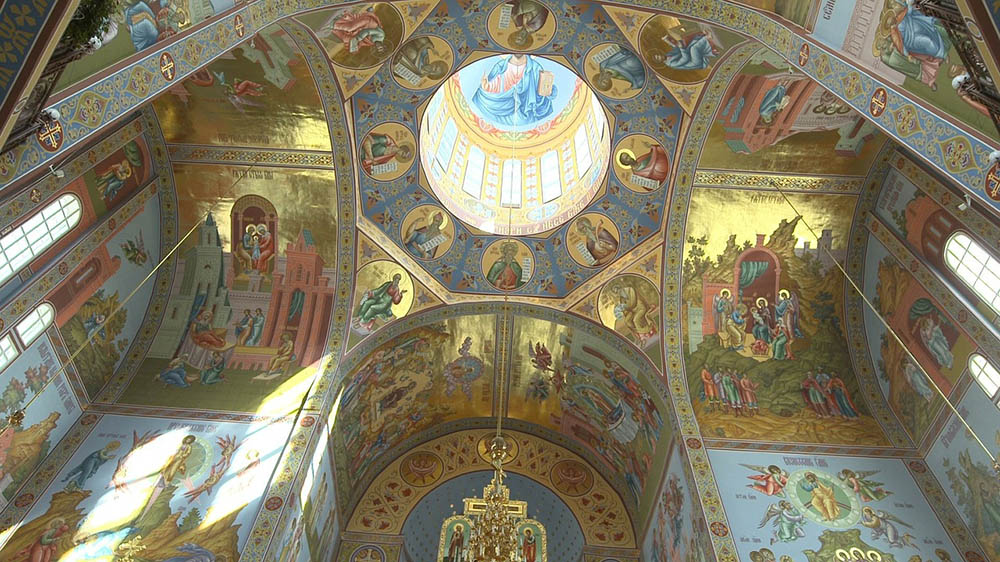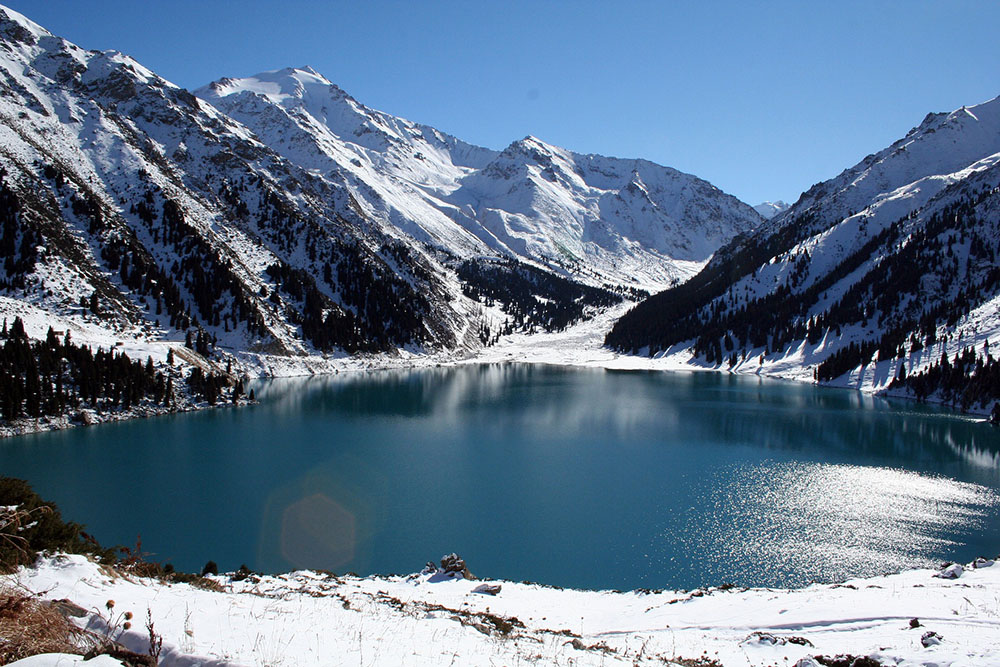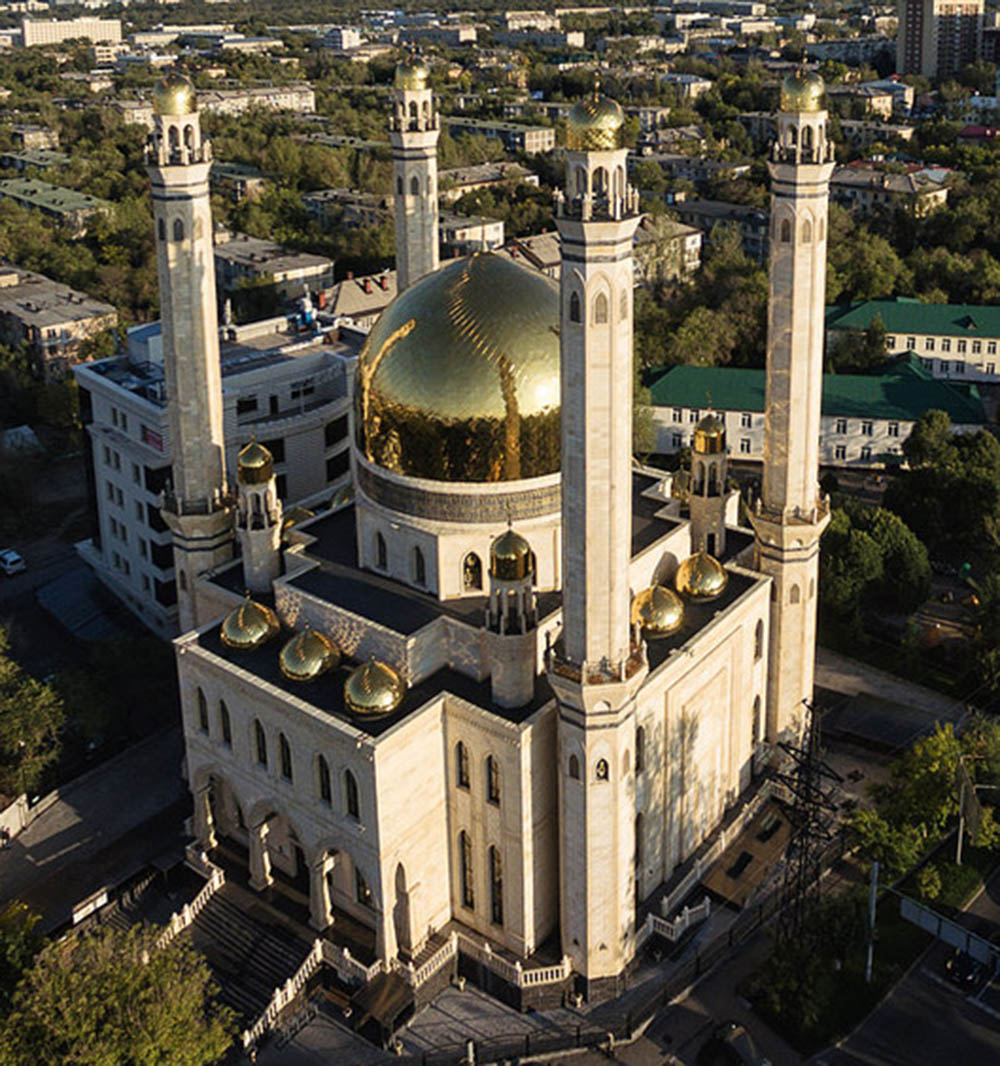According to the burial mounds found on the territory of modern Almaty, the first local inhabitants were the nomadic Sakan tribes, which were later replaced by Usuns.  However, the first settlements appeared in this area only in the VIII century. One of them, called Almaty, gave the name to the future city.
However, the first settlements appeared in this area only in the VIII century. One of them, called Almaty, gave the name to the future city.
The official date of foundation of the first capital of Kazakhstan can be considered the year 1854, when the Russian Tsar decided to build military fortifications in the area of the Malaya Almatinka River. As a result, by 1854, a full-fledged city, called Verny, grew up on the territory adjacent to the fortress.
With the advent of Soviet power, Verny became part of the Turkestan Autonomy and was renamed Alma-Ata (from the Kazakh "Almaty" - "apple tree"). And in 1927 the city became the official capital of the Kazakh Autonomous Soviet Socialist Republic, which it was until the end of the 90s.
 Alma-Ata is the largest city in Kazakhstan and the former capital of the republic. The city is located as a pearl in the shell of the Trans-Ili Alatau mountains, which rise like a wall on the southern outskirts of Almaty. Almaty remains the main political, cultural and scientific center of Kazakhstan.
Alma-Ata is the largest city in Kazakhstan and the former capital of the republic. The city is located as a pearl in the shell of the Trans-Ili Alatau mountains, which rise like a wall on the southern outskirts of Almaty. Almaty remains the main political, cultural and scientific center of Kazakhstan.
Almaty, as the city residents themselves call it, is the most secular city of Kazakhstan and at the same time its largest financial, economic and cultural center. The titled southern capital of the country, immersed in greenery and protected by the northern slope of the Trans-Ili Alatau, was and remains for the residents of the republic a city of great opportunities, and for tourists it is a distinctive corner of Central Asia, mostly Europeanized, but at the same time retaining its unique national flavor.
From a tourist point of view very interestings: "Medeo" and park areas (Central Park of Culture and Leisure, Park 28 Panfilovs). It makes sense to look into the Bostandyk and Almalinsky districts, famous for their museums and cinemas.
 Mosque of Almaty. For a long time, mosques were built in the most densely populated neighborhoods of cities, but they remained inaccessible for external fuss. The mosque of Alma-Ata is the largest in Central Asia: more than 10 thousand believers can fit in it simultaneously.
Mosque of Almaty. For a long time, mosques were built in the most densely populated neighborhoods of cities, but they remained inaccessible for external fuss. The mosque of Alma-Ata is the largest in Central Asia: more than 10 thousand believers can fit in it simultaneously.
The cathedral is surrounded by Panfilov Park, it is a rectangle of greenery. The cathedral (designed by its architect Zenkov) is one of the few structures built in the era of tsarism and not destroyed during the earthquake in 1911, despite the fact that it was built from wood without a single nail. After the revolution, it was used as a museum of history, a cultural center, and only in 1990 it was again granted the status of a temple of the Russian Orthodox Church.
The Central State Museum – represents the history of Kazakhstan and has a miniature copy of the country's archaeological treasure - a model of a unique "golden man" found in the burial mounds of Issyk. The original is in the Museum of Gold. The buried young man belongs to the Saka-Tigrahaud leaders. This monument, dated IV century BC, consists of four thousand ornaments; badges and plates made in the "animal" style.
Nature in the vicinity of Almaty is just fabulous. 15 km south of the former capital is the Big Almaty Lake - the main supplier of fresh water for the residents of the metropolis and just a unique natural object that emerged as far back as the Ice Age. The reservoir that hid in the picturesque gorge and hidden from the outside world by mountain ranges belongs to the Ile-Alatau National Park and is a protected object.
Excursion to the Charyn canyon (200 km). Travel time is about 3.5 hours one way.
Charyn Canyon, which is compared in beauty with the Grand Canyon in Colorado, is located east of Almaty. Unique forms of erosion and weathering of the relief will take you to the fabulous, unreal world of fancy sandstone sculptures: “Valley of Castles”, “Witches Gorge” and others. The height of steep slopes, columns and arches reaches 150-300 meters. The canyon stretches for 154 km from the northeast to the southwest, along the Charyn River, which is perfect for rafting. A rare representative of the world's vegetation is preserved here - Sogdian ash, which survived the era of glaciation.
